Walk leader Blaine Sanner. This was our first walk at Braddocks Trail Park and I think all agreed that it was a beautiful park. Wild flowers were in bloom and there were some pleasant trails through the park and a creek running with a waterfall. The creek banks are a perfect place to find Scarlet cups and part of the group took a “short cut” from one side of the park to the other and discovered them nestled into the side. The parks has large Tulip Poplar’s and some Elms so we were on the look out for Morels. The weather has been the perfect temperature but there has been little rain. We did find a a hand full of immature yellow morels and and one mature one but no black morels. The season may have already passed for the black morels. The other interesting finds were a number of different Rust fungi on the wild flowers and plants. We learned about Allodus podophylli (Mayapple Rust) last year and found it again on this walk. Many rusts are homoxenous which means that there is only a single plant host. This means that if you can identify the plant you can quickly identify the rust species. John Plischke III found and identified Puccinia mariae-wilsoniae on Claytonia virginica (Spring Beauty) and Puccinia violae on Viola sororia (Common Blue Violet).
Species list entered by Blaine Sanner. Identifications by Blaine Sanner, Richard Jacob and John Plischke III.
List of species found on the walk at Braddocks Trail Park:
[icon style=”camera”] Allodus podophylli (Mayapple Rust),
[icon style=”camera”] Auricularia auricula (Tree-ear / Wood Ear),
[icon style=”camera”] Daldinia concentrica (Carbon Balls),
[icon style=”camera”] Exidia glandulosa (Beech Jelly Roll),
[icon style=”camera”] Galerina marginata (Deadly galerina),
[icon style=”camera”] Hypsizygus ulmarius (Elm Oyster),
[icon style=”camera”] Lenzites betulina (Multicolor Gill Polypore),
[icon style=”camera”] Morchella esculenta (Yellow Morel),
[icon style=”camera”] Perenniporia robiniophila (Locust polypore),
[icon style=”camera”] Pleurotus ostreatus (Oyster Mushroom),
[icon style=”camera”] Polyporus squamosus (Dryad’s Saddle, Pheasant Polypore),
[icon style=”camera”] Puccinia mariae-wilsoniae (Spring Beauty rust),
[icon style=”camera”] Puccinia violae (Violet Rust),
[icon style=”camera”] Sarcoscypha austriaca (Scarlet cup),
[icon style=”camera”] Schizophyllum commune (Split Gill),
[icon style=”camera”] Stropharia rugosoannulata var alba (Wine Cap Stropharia),
Dried remains:
[icon style=”camera”] Morganella pyriformis (Pear-shaped Puffball),
[icon style=”camera”] Stereum complicatum (Crowded Parchment),
[icon style=”camera”] Trametes versicolor (Turkey-tail)
The Sarcoscypha austriaca (Scarlet cup) identification was confirmed by microscopic analysis of the spores and the hairs on the underside of the cup. The Stropharia rugosoannulata var alba is a variant with a white and somewhat lumpy cap.
Pictures by Richard Jacob
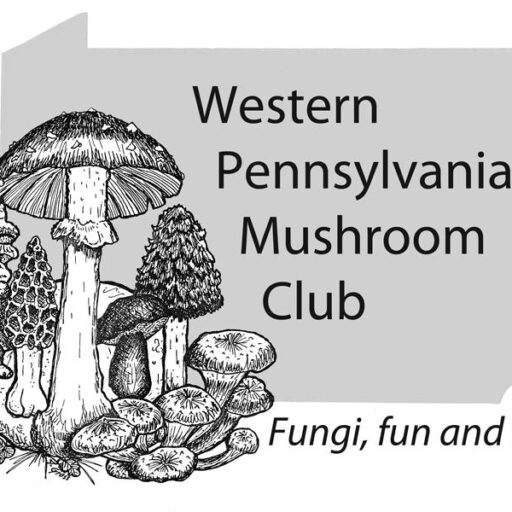
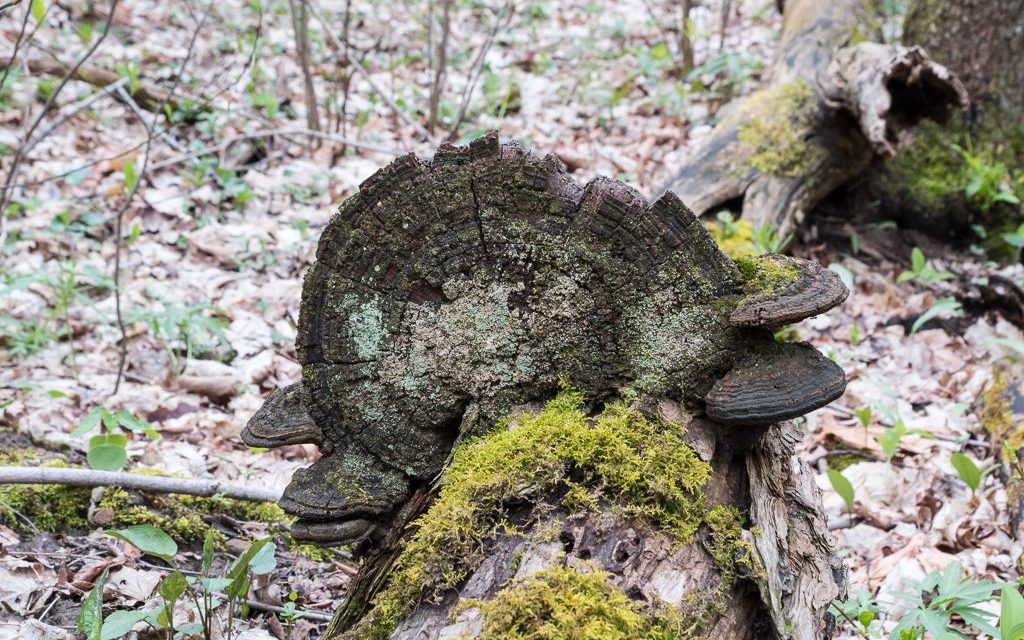












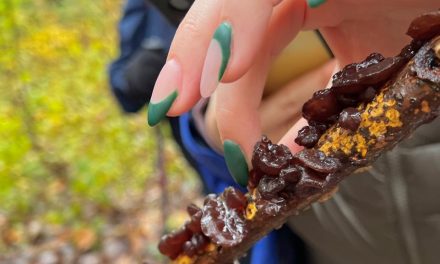
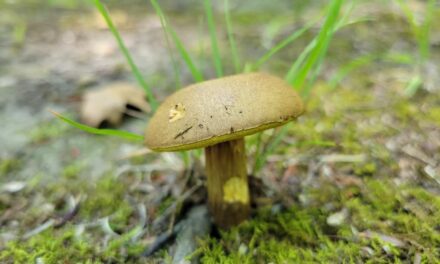
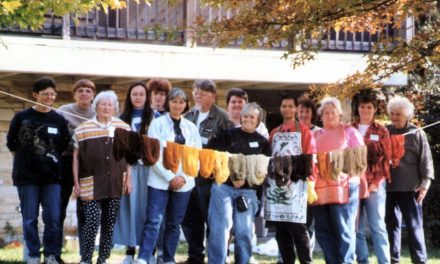
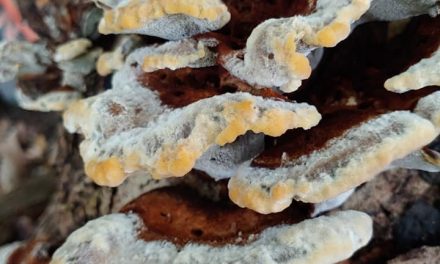

Beautiful park. Thanks, Blaine!
Nice photos gang. Glade you got out. What do you think happened to the morels?
The wild flower is Blue Eyed Mary